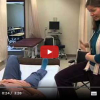- General
- Telehealth
- Career Trends
- Featured
- Legal
- News and Events
- Technology
- How To
- Procedures
- Training
- Allied Health Industry
- Allied Health Practitioners
- Employer News
- Candidate News
Recent Posts
Most Popular
Spinal Cord Therapy Could Restore Limb Function and Motor Control

The spinal cord is your body’s link between the brain and all the other parts. It controls movement, behavior, and countless other functions. Because injuries to the spinal cord aren’t reparable, they can devastate patients and their way of life. Most injuries happen at the neck so that all four limbs are affected.
The result is that patients are unable to perform everyday actions like writing and brushing teeth. Patients lose control of their limbs or other body parts, depending on where the injury occurred, often because scar tissue prevents the spine from communicating with the rest of the body. A new therapy, introduced by King’s College London, reversed a rat’s paralysis and taught the rats to move their legs and paws again. The gene therapy encourages cells to produce chondroitinase, an enzyme that breaks down scar tissue in the spine. Once the scar tissue is gone, networks of nerve cells regenerate, allowing connections between nerve cells to resume.
Researchers administered the therapy to rats whose spinal injuries closely resembled that of a human involved in an automobile accident or a fall. Over the course of a few weeks, rats in the study were able to climb a ladder and eventually demonstrated enough fine motor skills to grab a sugar cube. Since rats and humans use similar movements when reaching and grasping for objects, the initial findings are promising for human spinal cord patients.
Successful treatment could allow patients to dress independently, hold a coffee cup, and do a number of other daily tasks. As a result of the initial findings, researchers are developing ways to introduce the enzymes into the spinal cord using harmless viruses, because they naturally affect cells and deliver genetic material. Researchers remove the viral DNA, replace it with human DNA, and use the virus shells to deliver the necessary enzymes.
Researchers still have to determine how to overcome the immune system’s tendency to remove the gene switch mechanism. The ability to switch off a therapeutic gene is an important safeguard for researchers. One approach added a stealth gene to hide the gene switch from the immune system. To date, most spinal cord research addresses acute injuries rather than chronic, older spinal cord injuries.
Researchers believe that improving function for people confined to wheelchairs might restore bowel and bladder control, vastly improving quality of life for the patients.








Comments